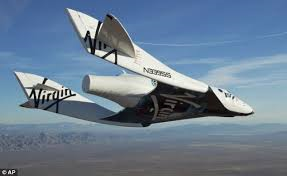
Breaking News
 AI Data Centers Build Their Own Power Plants Because the Grid Isn't Ready
AI Data Centers Build Their Own Power Plants Because the Grid Isn't Ready
 Tucker Responds to the Text Message Scandals and What It Reveals About the Dark Desires of the Left
Tucker Responds to the Text Message Scandals and What It Reveals About the Dark Desires of the Left
 AI stock frenzy sparks bubble fears as valuations skyrocket
AI stock frenzy sparks bubble fears as valuations skyrocket
 States embrace goldbacks amid dollar decline, offering antifragile currency against centralized...
States embrace goldbacks amid dollar decline, offering antifragile currency against centralized...
Top Tech News
 3D Printed Aluminum Alloy Sets Strength Record on Path to Lighter Aircraft Systems
3D Printed Aluminum Alloy Sets Strength Record on Path to Lighter Aircraft Systems
 Big Brother just got an upgrade.
Big Brother just got an upgrade.
SEMI-NEWS/SEMI-SATIRE: October 12, 2025 Edition
 Stem Cell Breakthrough for People with Parkinson's
Stem Cell Breakthrough for People with Parkinson's
 Linux Will Work For You. Time to Dump Windows 10. And Don't Bother with Windows 11
Linux Will Work For You. Time to Dump Windows 10. And Don't Bother with Windows 11
 XAI Using $18 Billion to Get 300,000 More Nvidia B200 Chips
XAI Using $18 Billion to Get 300,000 More Nvidia B200 Chips
 Immortal Monkeys? Not Quite, But Scientists Just Reversed Aging With 'Super' Stem Cells
Immortal Monkeys? Not Quite, But Scientists Just Reversed Aging With 'Super' Stem Cells
 ICE To Buy Tool That Tracks Locations Of Hundreds Of Millions Of Phones Every Day
ICE To Buy Tool That Tracks Locations Of Hundreds Of Millions Of Phones Every Day
 Yixiang 16kWh Battery For $1,920!? New Design!
Yixiang 16kWh Battery For $1,920!? New Design!
 Find a COMPATIBLE Linux Computer for $200+: Roadmap to Linux. Part 1
Find a COMPATIBLE Linux Computer for $200+: Roadmap to Linux. Part 1
Two hour Sydney-London flight on track for 2018 launch

The project, which saw US and Australian military scientists combine resources, is on track to launch in 2018 after its latest engine trial hit the target speed of Mach 7.5 - more than seven times the speed of sound.
It could revolutionise global air travel and prove cost-effective access to space, Alex Zelinsky, the chief Australian scientist working on the project said.
For a jet or rocket to be classified as hypersonic, it must travel at five times the speed of sound, or Mach 5. The latest trial at the world's largest land testing site in Australia saw a rocket hit the target speed of Mach 7.5 (5760 miles per hour), reaching an altitude of 279 kilometres.
"We want to be able to fly with a hypersonic engine at Mach 7," Michael Smart, a hypersonic expert from the University of Queensland who is working on the test, told the AFP. "You could fly long distances over the Earth very, very quickly.



